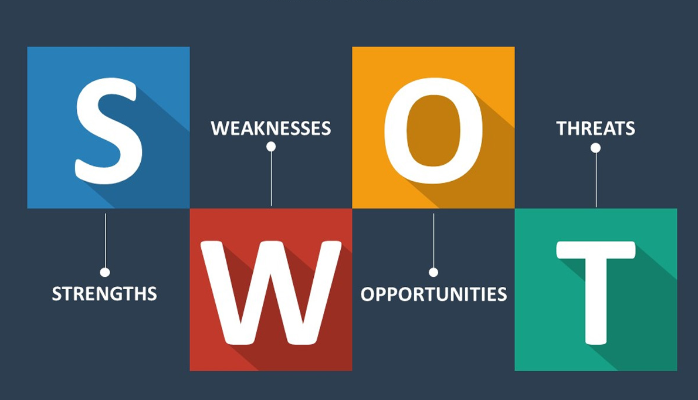How to develop a strategy for success?
What is a SWOT Analysis?
One of the key questions we get asked is “how to develop a strategy for success?” For business managers, SWOT analysis is an extremely valuable business tool that can help you assess situations and your current position before make decisions on new business actions and strategy.
Be honest and ask yourself where you want to go with your business growth and how you might get there – and what might get in your way. These are big questions to ask and the answer may not always be clear. A powerful but simple technique, SWOT analysis will pinpoint what’s working well, and what’s not so good.
As part of your business planning process, conducting a SWOT analysis will help you identify your company’s best influence and reduce the chances of failure. By understanding what you’re lacking, and eliminating hazards that would otherwise catch you unawares, you will get ahead of your competitors giving you the advantage in the market place.
SWOT stands for:
- Strengths
- Weaknesses
- Opportunities
- Threats
SWOT Analysis is a simple yet effective framework for assessing these four aspects of your business .Use a SWOT analysis to set actions for improvement, help you to build on what you do well, address where you are lacking and evaluate your competitive position.
How to write a SWOT Analysis
It is recommended to first create a list of questions for each element. The questions serve as a guide for developing the SWOT analysis and creating a balanced list. The SWOT framework can be in list format, as free text, or, most commonly, as a 4-cell table, with quadrants dedicated to each element. Strengths and weaknesses are listed first, followed by opportunities and threats.
Observing what is happening within the company right now, serves as a great source of information for the strengths and weaknesses categories of your SWOT analysis. Examples of internal factors may include financial and human resources, tangible and intangible assets, and operational efficiencies. Take time to identify your Unique Selling Point (USP) and add this to the Strengths section.
Strengths
What are we really good at?
What are our unique skills?
Where do we outperform our competitors?
Weaknesses
What are we really poor at?
What resources are we short of?
Where are we at a competitive disadvantage?
Being aware of what is happening external to the company plays an equally as important factor when looking at the opportunities and threats categories of your SWOT analysis. Examples of external threats may include, market and industry changes, access to suppliers and current customer demand.
Opportunities
How could we improve our sales?
Where could we improve our efficiency?
What new products/services/niche markets could be added?
Threats
What regulations are changing?
What products/services are losing demand?
Which resources are difficult to find?
What are our competitors doing?
Using your SWOT Analysis
A SWOT analysis is a great way to guide business-strategy meetings. Bring your whole team together to “BRAINSTORM” ideas, discuss the company’s core strengths and weaknesses and to detail the opportunities and threats. Being realistic and rigorous with your approach will bring you the best results and don’t shy away from those difficult and uncomfortable questions.
Once you have established what will probably be a long list of potential actions, now is time to analyse the information you have gathered. You will want to build on your strengths, boost your weaknesses, Head off those threats and develop every opportunity.
But, before you set out your plan of action, take a step back and think about how to;
Prioritise your ideas
Focus your time where it will be most effective
Spend money where it will make the most significance
Contact us at admin@profitabilitygroup.co.uk or on 01661872004 if you would like to speak to a member of the team about how to develop a strategy for success and find out more about our Business Growth Programme.

